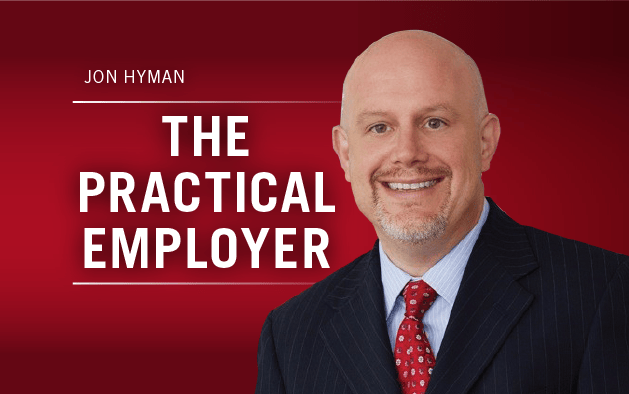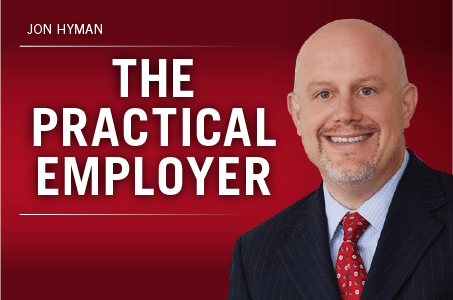It should come as no surprise that Alzheimer’s disease has a big impact on the workforce.

After all, as one speaker at a recent Alzheimer’s-focused event pointed out it’s a devastating disease both for patients and for caregivers.
The event, themed “The State of Care: Disrupting Alzheimer’s” on Sept. 12 in Chicago, covered many facets of the issue: the current state of affairs with Alzheimer’s; why it’s important to confront this public health crisis now; the quest for early detection and a cure; and a view form Capitol Hill.
Start with caregivers: 16.1 million people provide $232.1 billion in uncompensated care a year and tens of thousands of Alzheimer’s caregivers are teenagers, according to speakers at the event. A different source states there are “250,000 children and young adults between the ages of 8 and 18 who are child caregivers to those with Alzheimer’s disease or dementia.”
Whatever the correct number, the takeaway for employers is there is a large number of young people — perhaps not yet graduated from high school and still trying to get an education — whose careers could be impacted early on by their caregiver status. What happens when these children enter the workforce? Is a college education as attainable for these people compared to those who don’t have caregiving responsibilities yet?
Employment issues are commonplace for these people, according to panelists. Caregivers worry if they can afford to send a sick relative to out-of-home care or if their need to work fewer hours will impact their employment.
To be ready for aging and Alzheimer’s, we have to start by actually valuing caregiving, says @jwjnational‘s Sarita Gupta. Caregivers are some of the nation’s most vulnerable workers, mostly making poverty wages, often needing food assistance. #AtlanticStateofCare pic.twitter.com/DrUxS0gw2o
— AtlanticLIVE (@AtlanticLIVE) September 12, 2018
There are programs and benefits that can help caregivers in the workplace. Workforce’s benefits columnist Jennifer Benz wrote on the importance of these programs, which include referral resources, backup child care, eldercare, extended leave, flexible schedules, work from home options and more. Further, Benz argued, organizations can’t simply have these programs in place; they also should “have cultures of trust and compassion, so employees can be transparent about the burdens they manage outside of work and so their work can flex around those needs. “
The caregiver lifestyle isn’t easy, even going past the uncompensated care consideration. For one, caregiving is a big time commitment; 36 percent of caregivers spend 31-40 hours a week caregiving and 19 percent spend 40+ hours per week, according to the “Generational Considerations for America’s Workforce,” a June 2018 report from Unum. The report also found that caregiving may have unwanted physiological and personal problems, with 61 percent of caregivers experiencing stress, anxiety and/or depression, 27 percent reporting marital or relationship stress and 25 percent missing their own medical appointments.
And what about when an employee gets Alzheimer’s?
Let’s start looking at this from a broader perspective. Alzheimer’s accounts for $277 billion a year in direct medical costs. According to speakers at the event, two-thirds of the victims are women (just like 67 percent of the caregivers for this disease are women). Even though there is no cure and the most we can do is on the preventive front, there’s still not enough being done early on. “Our nation is not a prevention-focused nation,” said one speaker.

One medical necessity they recommended: “the checkup from the neck up”. This type of checkup, in which doctors test for cognitive health, isn’t as common as it should be.
Here are a couple resources for employers who find out one of their employees has been diagnosed. This Workplace Strategies for Mental Health webpage includes a case study of an employer who found out an employee had dementia, the steps they took to offer accommodations and eventually the steps they had to take to ultimately terminate the employee. And this guide from the Alzheimer’s and Dementia Alliance of Wisconsin tells employers how to identify, approach and assist employees with early onset dementia.
The major takeaway I got from these sources was that when an employee develops Alzheimer’s, they can continue working with accommodations for a good amount of time in many cases. They may have to quit eventually or an employer may have to let them go, but that shouldn’t be the immediate response.
Millennials are as concerned about Alzheimer’s and dementia as they are about retirement, says Harry Johns of @alzassociation at #AtlanticStateofCare. Seeing the human impact of the disease mobilizes people to make change and progress. pic.twitter.com/N8HUTB5zzF
— AtlanticLIVE (@AtlanticLIVE) September 12, 2018
Some questions I have for employers: How do you plan on dealing with dementia/ Alzheimer’s as your workforce ages? What are you doing to address the caregiving concerns of your employees? Do you have any unique resources that encourage employees to focus on their brain health or get that “check-up from the neck up”?
I want to mention one other moment from the State of Care event. At one point, a panelist asked everyone in the audience how many people have been personally touched by Alzheimer’s or some other form of dementia. I didn’t raise my hand, as so far none of my relatives have developed one of these diseases yet, and I was in the very small minority. It was a strong reminder that this has impact either directly or indirectly on a lot of people, and that’s not going to change any time soon, both publicly and in the workplace.
Also Read:
- Alzheimer’s Poses Unique Challenges for Teen Caregivers (CBC)
- The New Caregivers: Children, Teens and Young Adults (AlzLive)
- Early-Onset Alzheimer’s: Too Soon to Forget: This outlines the benefits options available to those who have received an Alzheimer’s diagnosis (Workforce)
- Effects of Dementia Inside and Outside the Workplace (Workforce)




 People should take responsibility for their own health, but adopting the perfect heath behaviors in every aspect of our lives is impossible. Every person, regardless of their health status, drives health care costs.
People should take responsibility for their own health, but adopting the perfect heath behaviors in every aspect of our lives is impossible. Every person, regardless of their health status, drives health care costs.



 Take this instance. Years ago, people would took paper surveys about their mental well-being. Am I depressed? Am I stressed?
Take this instance. Years ago, people would took paper surveys about their mental well-being. Am I depressed? Am I stressed?